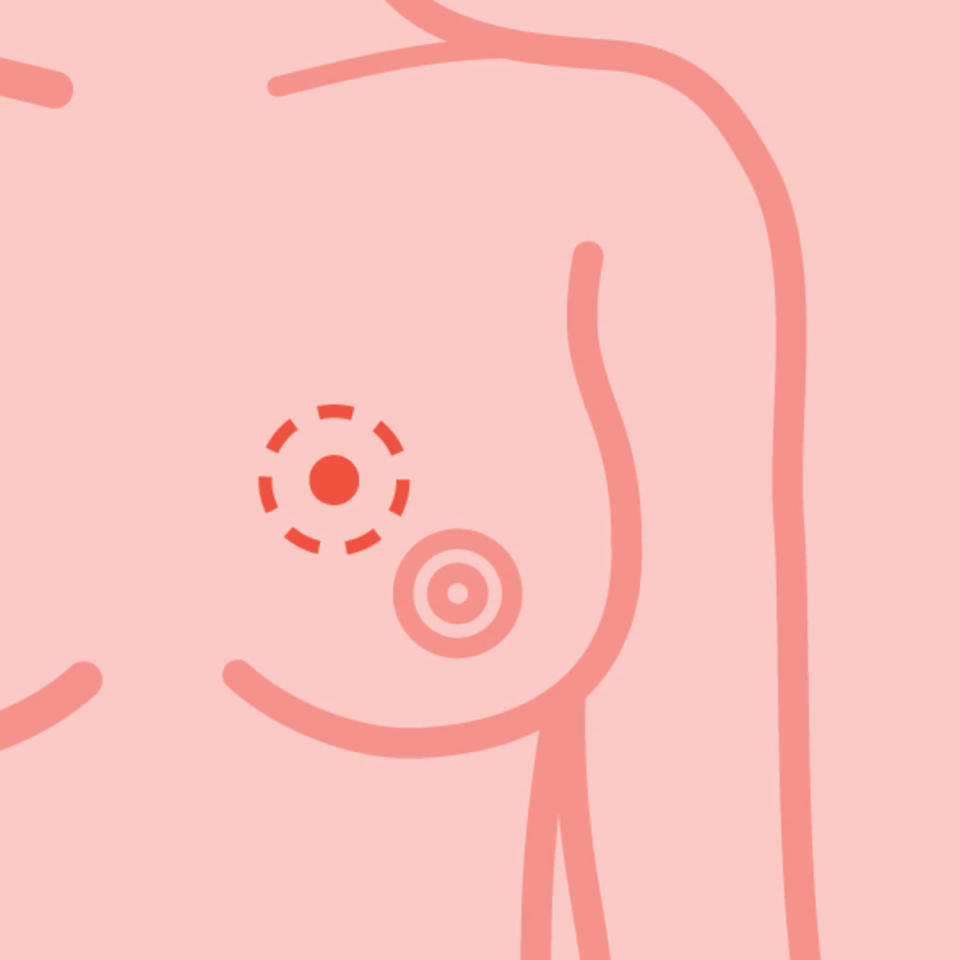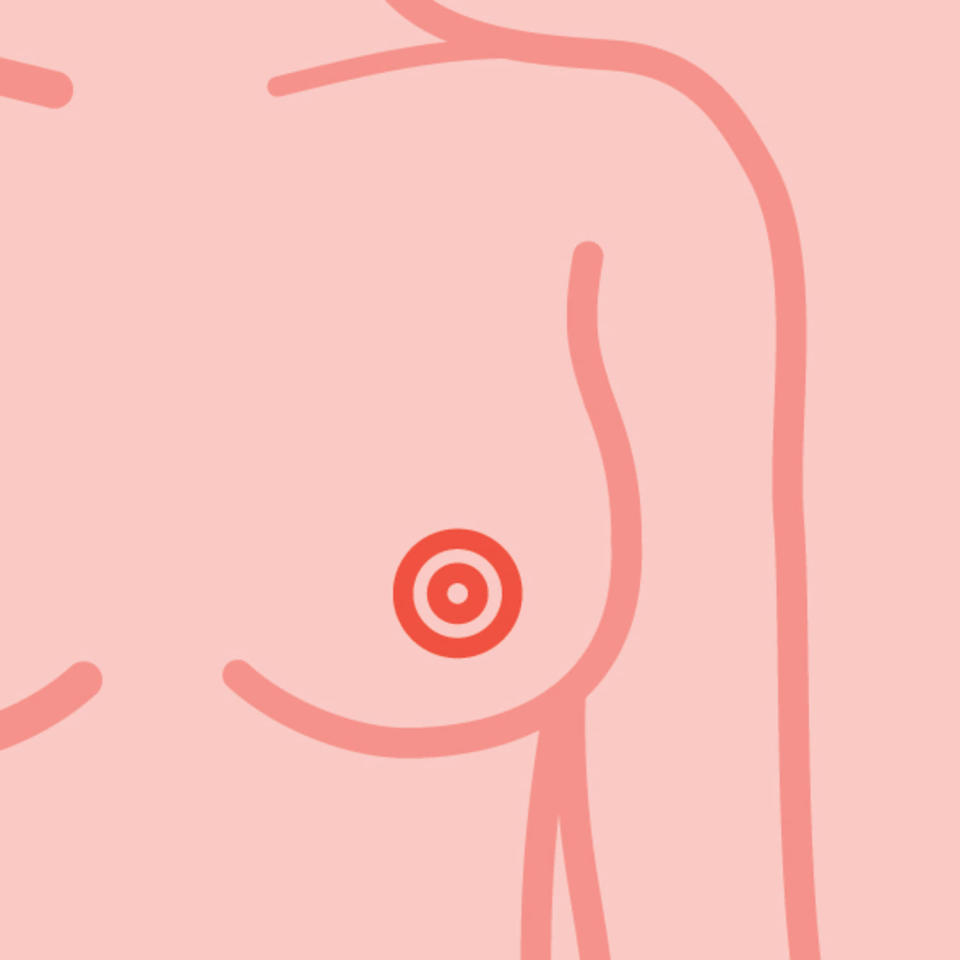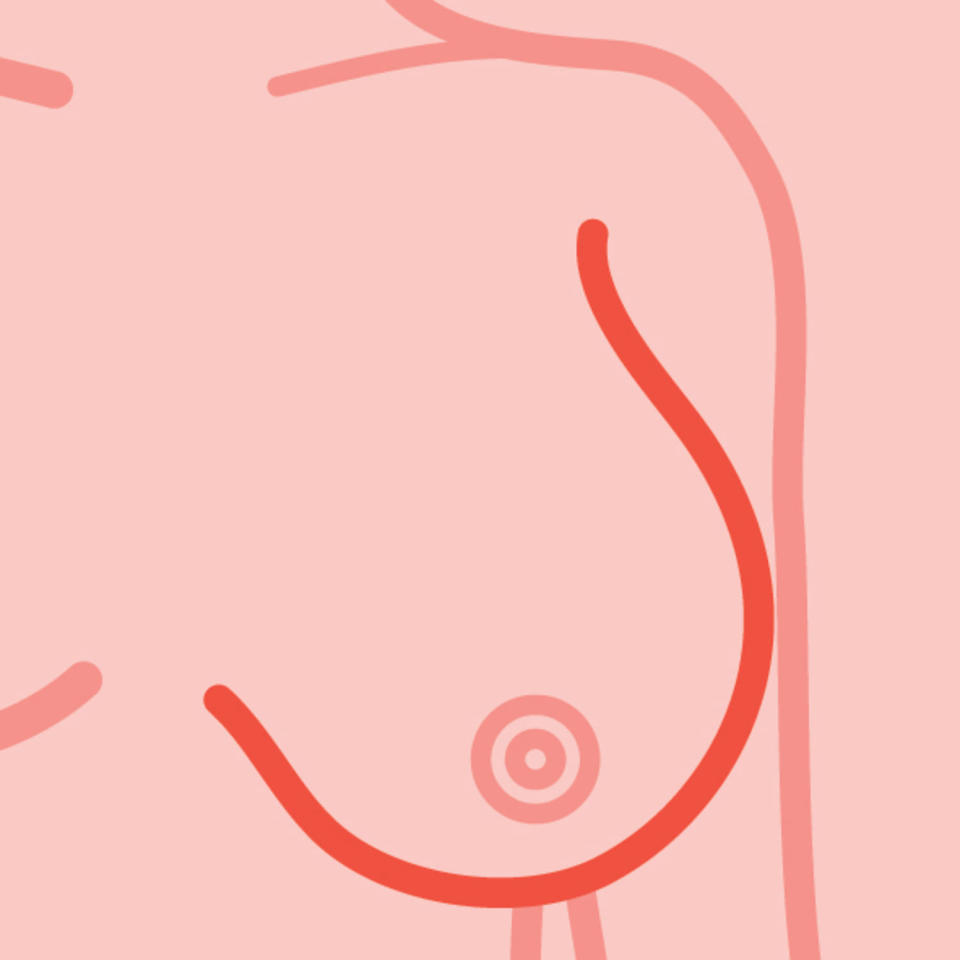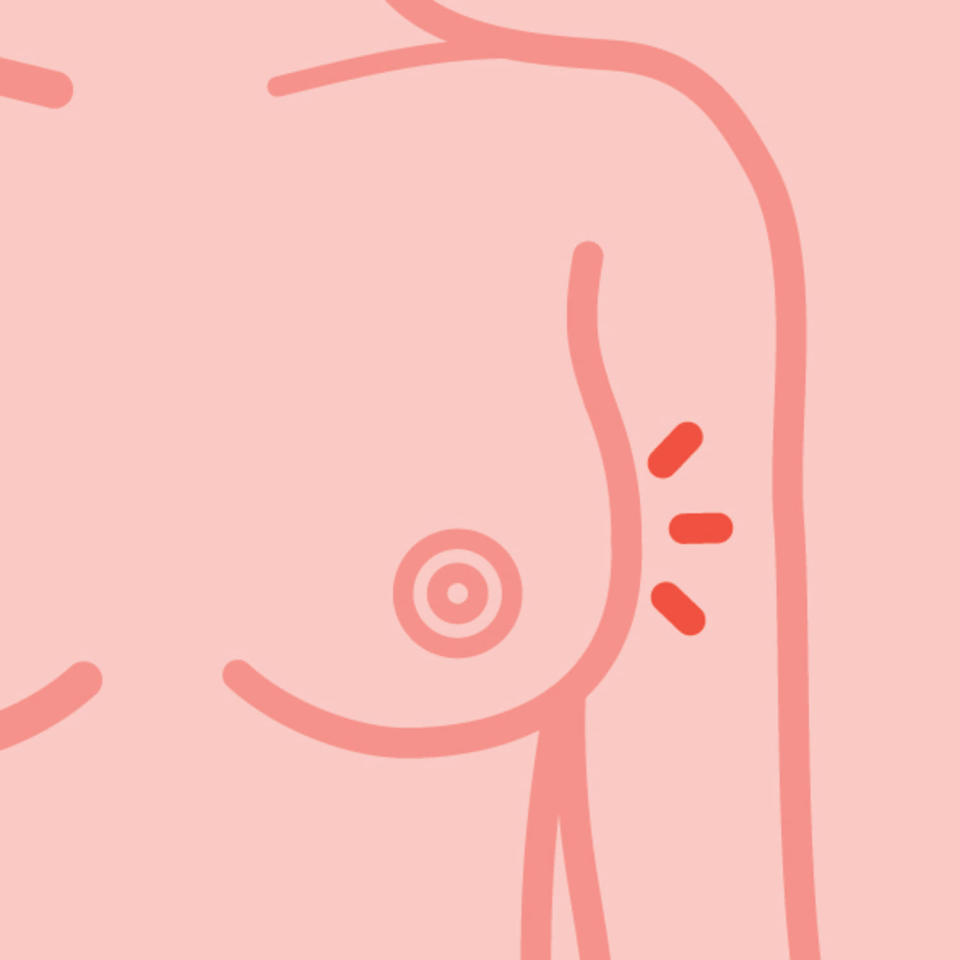8 pictures to help you determine if a breast lump is cause for concern
Most people know that one of the first signs of breast cancer is a lump, but if you do notice one in your breast, it can still be hard to tell if it's worth seeing the doctor. Pictures of breast cancer lumps and knowing the other warning signs can help you decide.
It's important to note that not all breast lumps are cancerous — in fact, your breast texture changes with your menstrual cycle, and because breasts are made of glands, fat and other tissue, one part of the breast can feel different from another, according to Mayo Clinic. And if that isn't confusing enough, breast cancer can develop without ever causing a lump.
For years, women were told to perform self-breast exams to check for lumps on a regular basis, but more recent research has called into question whether these self-checks actually lead to earlier detection. So what are you supposed to do to make sure you're staying on top of any possible breast lumps that develop?
Read on for guidance on when to visit a doctor for a change in your breast and to see pictures of breast cancer lumps that can help you assess your risk.
Should you do self-breast exams?
For people with an average risk of breast cancer (meaning no family history or lifestyle factors that increase risk), doing a self-breast exam on a regular basis isn't necessary.
That's because the data saying that they improve breast cancer detection and outcomes is lacking, experts say. In 2017, the American College of Obstetricians and Gynecologists noted that self-breast exams can even cause harm if it leads a person to believe they have a cancerous lump when they don't.
The guidance now is to be familiar with the shape and texture of one's breasts in case something changes so you can raise it to a doctor. Examples of noteworthy changes include pain, redness, nipple discharge or a lump. "Being familiar," per ACOG, means knowing how your breast normally look and feel.
Even though you don't need to be worried about doing a regular self-breast exam, it's important to note that breast cancer patients often find their own lumps, so you should be knowledgeable enough about your breasts to notice any changes.
That's why Dr. Amy Kerger, a radiologist who specializes in breast cancer imaging at Stefanie Spielman Comprehensive Breast Center, part of Ohio State University Wexner Medical Center, says there are benefits to picking one day a month to do a brief examination.

"Pick a date, because your breasts change with your hormones," Kerger said. "And you should do it in the same manner, whether you're in the shower, lying in bed, sitting up. ... All of that changes what you're feeling and where things are in your breasts, because breasts are mobile. It's really important that, if you're going to do something like that, to do it consistently."
Dr. Judy Song, chief of breast imaging at MedStar Health, added that at different points in your menstrual cycle, you may have more lumps and bumps, so being familiar with those changes can help you understand what's normal on your chest.
By regularly examining your breasts and the area around them — Kerger said to make sure your examination includes the area around your armpit and the sides of your breasts — you'll be more likely to notice alarming lumps or other changes quicker.
"I would more encourage women to say if something just doesn't feel right. If a woman is at all concerned, even if it may be nothing ... she should always err on the side of caution," said Dr. Jessica Jones, a breast oncologist at UTHealth Houston and Memorial Hermann in Houston, Texas. "It is easier to do a test than find out later."
What does a lump really look like?
Kerger said that any new lump "is a problem" that you should bring to a doctor.
According to Know Your Lemons, a nonprofit global organization that focuses on making information about breast cancer warning signs and detection methods accessible, a hard lump is a common sign of cancer.

"The most common sign of breast cancer is a lump, deep in the breast. It often feels hard, like a lemon seed, and usually immovable. It can be any shape or size," said the site. You might also see a bump, according to the site, on the surface of your breast.
Kerger said that doctors are especially concerned if a lump is hard and "not mobile."

"When something is hard and doesn't move around, like you're rolling a marble on a table under your hand, (that) is more concerning," she said. However, it can be hard for people to diagnose this on themselves, so she recommends going to your doctor with concerns like these.
For men, who can be diagnosed with breast cancer, hard lumps right near the nipple are a warning sign.

"Because (men) normally do not have breasts in the way women do, they may notice a lump or a dimple or a change in skin color on their breast that would indicate the presence of a breast cancer," said Jones. "If (a man) has a change on his breast, he should absolutely let his doctor know."

However, there are also a lot of innocent reasons behind the lumps and bumps on your breast. Some can be cysts, which are collections of fluid, or fibroadenomas, which are benign and made up of tissue. Your breasts also contain lymph nodes, which Know Your Lemons says can "feel like soft beans," and milk lobes, which "feel like soft peas."
Being familiar with your breasts can help you tell the difference between what’s normal and what’s new.
What are other breast cancer warning signs?
Lumps and bumps may be the first signs people think of when they think of breast cancer detection, but there are several more signs that people should be on the lookout for.
Kerger said that many changes can occur near the nipple and areola: Any change in that area, including color or inversion of the nipple, should be mentioned to your doctor.

Discharge from the breast, which can be clear fluid or contain blood, should also be mentioned.

Jones also said that dimpling, which usually looks like an indentation, is a warning sign. Another symptom can be breasts beginning to change shape - such as becoming lopsided or one becoming swollen.

Another less common symptom, Kerger said, is breast pain. While some breast pain is normal, especially when in tune with your menstrual cycle, breast pain in a specific area is less common.
"If you have breast pain you can point to with one finger or is ... in one quadrant of your breasts ... then that can be a little more concerning," Kerger said.

If you have any of these signs or symptoms, tell your primary care physician. If you are 40 years or older, you should be receiving regular mammograms, but if you are younger and having these symptoms, you can still get a mammogram. Some people with dense breasts may need an ultrasound, which can give a more thorough look at the breast and surrounding area. Song said that if you do have these tests done, there's nothing wrong with asking your doctor for as much information as possible.
"Don't be shy to ask to see the images and get an understanding of what your breast makeup is," she said. "A picture's worth a thousand words."
This article was originally published on TODAY.com

